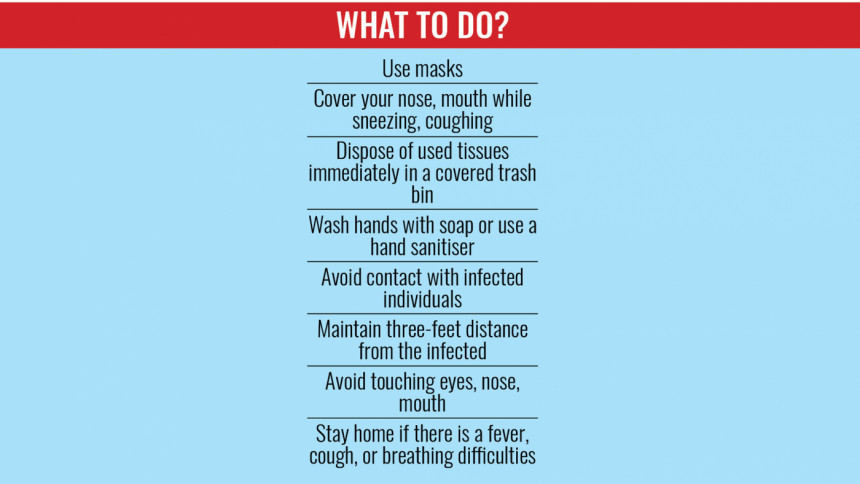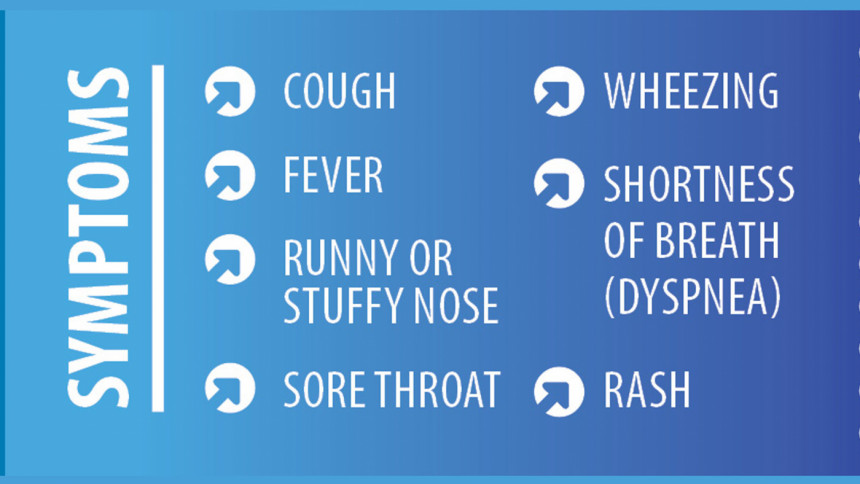First HMPV case of the year reported

A 30-year-old woman has been found infected with the Human Metapneumovirus (HMPV), the first case of the disease in Bangladesh this year, according to health officials.
Halimur Rashid, line director of Communicable Disease Control Programme of Directorate General of Health Services (DGHS), said the woman from Kishoreganj also tested positive for Klebsiella Pneumoniae, a variant of pneumonia.
"The condition of the woman deteriorated due to pneumonia, not HMPV," said Halimur, adding that the patient is currently under treatment at Infectious Diseases Hospital, Mohakhali.
First identified in the Netherlands in 2001, HMPV spreads through direct contact between people, or when someone touches a contaminated surface.

HMPV is transmitted through respiratory droplets, direct contact with infected individuals, or contaminated surfaces. Infections are most common during late winter and spring, and symptoms range from mild cold-like illness to severe respiratory conditions, such as bronchiolitis or pneumonia, according IEDCR.
Halimur said the infected woman is a homemaker, who has no history of travelling abroad. Her husband lives abroad, but he has not visited the country recently.
He said the woman resides in Narsingdi, where she contracted the virus. HMPV and a bacterial infection has made her condition somewhat complicated.

Addressing concerns about the HMPV virus, Halimur told The Daily Star that there is no need to panic about this virus. It has been detected in the country before, and the mortality rate from this virus is very low.
He emphasised that we need to be more cautious by wearing masks, washing hands, maintaining hygiene, and staying hydrated.
Halimur also mentioned that individuals with two or three underlying health conditions, as well as those under the age of five and above 65, are at greater risk of being infected with this virus.
There is currently no vaccine or specific antiviral treatment for HMPV. Management focuses on supportive care, including hydration, fever reduction, and in severe cases, oxygen therapy or mechanical ventilation. Most people recover on their own within seven to 10 days, according to IEDCR.
Meanwhile, the DGHS yesterday issued a seven-point directive, including wearing masks and washing hands with soap and water, to prevent the spread of HMPV.
Earlier on January 8, Prof Tahmina Shirin, director of IEDCR, said HMPV was first detected in Bangladesh in 2017. Since then, it has been identified almost every year to some extent. However, no casualty has so far been reported.
Although the virus has been detected in many individuals so far, there is no record of significant complications, she said, adding that there is currently no reason to panic about the HMPV virus.
In a statement on that day, Bangladesh Health Watch (BHW), civil society advocacy and monitoring network dedicated to improving the health system in Bangladesh, called on the health authorities to strengthen surveillance, enhance diagnostic capacity, and ensure the availability of medical resources before the disease enters the country.
On January 6, India confirmed its first three cases of HMPV in the southern state of Karnataka and Gujarat, officials and media reports said.
News of the current outbreak of the disease followed an announcement by China's National Administration of Disease Control and Prevention that it was testing a new reporting protocol in response to pneumonia cases, reports Deutsche Welle.


 For all latest news, follow The Daily Star's Google News channel.
For all latest news, follow The Daily Star's Google News channel. 




Comments